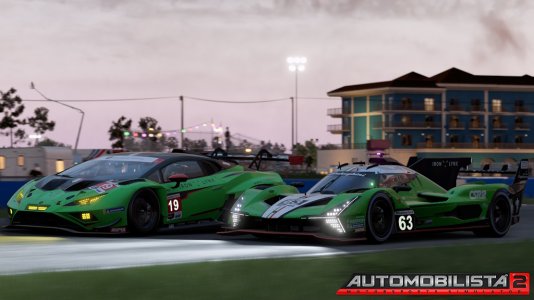Hello, I been using DR2 for quite some time now. Just wanted to share an update of the current fixes that have worked for me in the hope that it may help guide someone out there. Most of this has been suggested in other threads, I'm just summarizing. I'm using the Oculus Rift S with a 3080 laptop.
*Open composite. This alone brought me around 10% of performance overhead AND fixed the low quality dithering at low light. The only problem I have is that whenever the headset goes to sleep, DR2 will crash. I "fixed" that by covering the headset sensor with tape.

 gitlab.com
gitlab.com
*Eye accommodation fix there is an Open composite compatible version. Obviously a must for usability and improved tree quality.

 github.com
github.com
*FOV tangent multiplier 0.8/0.8 in the Oculus debug tool. This alone gave me around 20% performance overhead and can be used with all Oculus games without any visible penalty.
*Game settings optimization, there are many guides out there; however, you should try all settings by hand to measure actual improvements in different tracks conditions. MSAA4x did seem to be the sweet spot with SS at 1 (disabled) any more and performance suffers without notable quality improvements. Other picky setting is ground cover, in some sections can really tax my system, medium is a good starting place but I ended customizing it.
*Nvidia shader cache setting at UNLIMITED in the Nvidia control panel. This actually seemed to help reducing stuttering!
*Starting Steam in light mode. This actually seemed to free my CPU a bit and improved stuttering In general.
Add the following to the Steam command line:
-no-browser +open steam://open/minigameslist
*Running a clean system. This is an obvious step, but often overlooked. Each time I would restart the computer and run only the essentials. I actually made a batch file starting and configuring the Oculus software, Steam, haptics, etc, to simplify the clean startup process.
Some things that have NOT worked or brought little/any improvements:
*CAS sharpening filter. Not compatible with Oculus.
*VRPREFKIT sharpening and FOV rendering tool, didn't work for me either with Open composite or the Oculus SDK at the same time as the Eye accommodation fix.
*OpenXR toolbox. Will run but didn't get any major performance improvement either with rescaling or FOVeated rendering, and did affect quality so I decided to disable it.
So that's it, took a lot of time from my life trying to get the most of this sim, and surely will in the future! But I really love rally simulation in VR, so it's worth it.
All this feels like amateur rally racers tuning up their ride, so it's in the sport's spirit I guess... Jajaja
*Open composite. This alone brought me around 10% of performance overhead AND fixed the low quality dithering at low light. The only problem I have is that whenever the headset goes to sleep, DR2 will crash. I "fixed" that by covering the headset sensor with tape.
README.md · openxr · Campbell Suter (ZNix) / OpenComposite · GitLab
Reimplementation of OpenVR, translating calls to OpenXR.
*Eye accommodation fix there is an Open composite compatible version. Obviously a must for usability and improved tree quality.
GitHub - mbucchia/dr2vrfix-openxr: This project allows the use of the Dirt Rally 2 VR eye accomodation fix v2.0 with OpenComposite, the WMR OpenXR runtime and OpenXR Toolkit.
This project allows the use of the Dirt Rally 2 VR eye accomodation fix v2.0 with OpenComposite, the WMR OpenXR runtime and OpenXR Toolkit. - mbucchia/dr2vrfix-openxr
*FOV tangent multiplier 0.8/0.8 in the Oculus debug tool. This alone gave me around 20% performance overhead and can be used with all Oculus games without any visible penalty.
*Game settings optimization, there are many guides out there; however, you should try all settings by hand to measure actual improvements in different tracks conditions. MSAA4x did seem to be the sweet spot with SS at 1 (disabled) any more and performance suffers without notable quality improvements. Other picky setting is ground cover, in some sections can really tax my system, medium is a good starting place but I ended customizing it.
*Nvidia shader cache setting at UNLIMITED in the Nvidia control panel. This actually seemed to help reducing stuttering!
*Starting Steam in light mode. This actually seemed to free my CPU a bit and improved stuttering In general.
Add the following to the Steam command line:
-no-browser +open steam://open/minigameslist
*Running a clean system. This is an obvious step, but often overlooked. Each time I would restart the computer and run only the essentials. I actually made a batch file starting and configuring the Oculus software, Steam, haptics, etc, to simplify the clean startup process.
Some things that have NOT worked or brought little/any improvements:
*CAS sharpening filter. Not compatible with Oculus.
*VRPREFKIT sharpening and FOV rendering tool, didn't work for me either with Open composite or the Oculus SDK at the same time as the Eye accommodation fix.
*OpenXR toolbox. Will run but didn't get any major performance improvement either with rescaling or FOVeated rendering, and did affect quality so I decided to disable it.
So that's it, took a lot of time from my life trying to get the most of this sim, and surely will in the future! But I really love rally simulation in VR, so it's worth it.
All this feels like amateur rally racers tuning up their ride, so it's in the sport's spirit I guess... Jajaja
Last edited:









